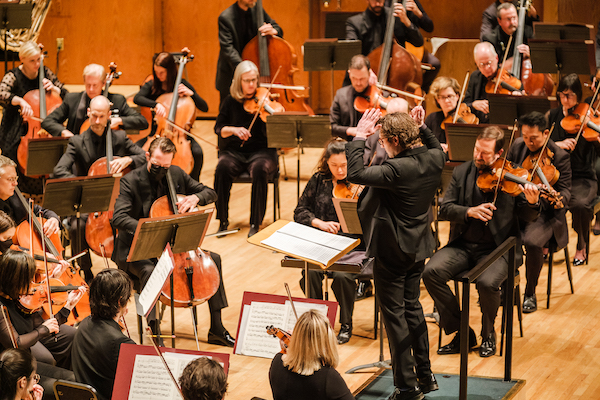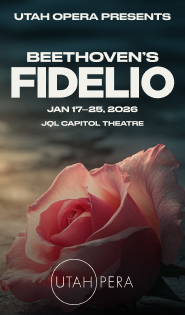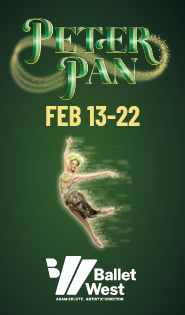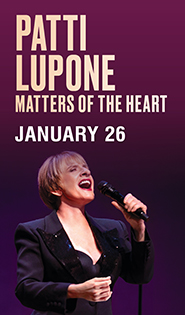Pianist Pratt provides the highlights at Utah Symphony program
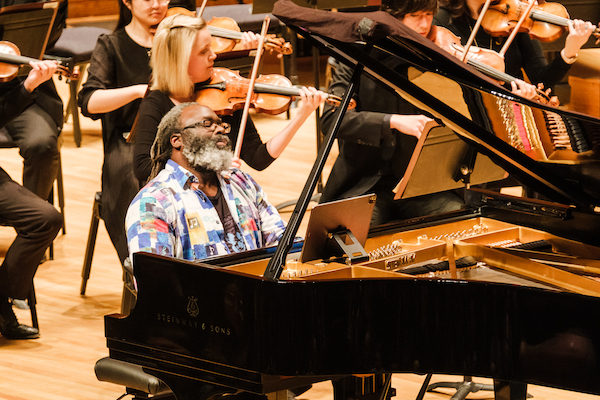
Pianist Awadagin Pratt and conductor Teddy Abrams joined the Utah Symphony Friday night for an eclectic program featuring music by Bach, Copland, and Jessie Montgomery as well as a piece by Abrams himself.
Abrams was making his Masterworks debut with this week’s concerts, having previously conducted Utah Symphony pops programs. Heard Friday in his dual roles as composer and conductor, Abrams was more impressive in the former role.
The concert’s highlights were in the first half, which featured Pratt’s transcendent renditions of Bach’s Keyboard Concerto No. 4 in A Major and Montgomery’s Rounds for piano and orchestra.
Pratt recorded Rounds last year, and in her composer’s notes, Montgomery thanked Pratt for “his collaborative spirit and ingenuity in helping to usher my first work for solo piano into the world.”
Montgomery’s works for strings have been in the repertoire for several years; the Utah Symphony played two of them in socially distanced concerts during the pandemic: Starburst in November 2020 and Strum the following May.
Montgomery’s Rounds and the Bach Keyboard Concerto No. 4 pair exceptionally well, and both are suited to Pratt’s unique technical and interpretive gifts, which include a strong, percussive tone and the ability to phrase busy scalar passages in an interesting way.
Pratt took the stage in an oversized, multi-colored patchwork shirt over a black T-shirt, which set the tone for his relaxed, contemplative approach to the music. Throughout his performance, he leaned back and looked at the ceiling, apparently listening and reacting to the music he and the orchestra were making. He gave the first movement a genial character, interacting sensitively with assistant concertmaster Kathryn Eberle in duetted passages. He made copious use of the damper pedal, which muddied some of his runs, but also allowed the melody notes to ring through the hall.
His use of the pedal served him better in the second movement, in which he wrung the emotion out of Bach’s chromaticism. With his strong, legato right hand, he connected each phrase, building to a strong climax. The exposed solo passages were particularly spellbinding and were made more so by Pratt’s attention to the movement’s dynamic architecture.
Though the orchestra was an able partner throughout most of the piece, conductor Abrams failed to match Pratt’s energy in a few places in the second movement, where the strings’ tone was too muted. The orchestra was more present in the third movement, where Pratt’s strong tone affected a playful quality, effortlessly falling into each trill and maintaining a strong contrapuntal line in the left hand.
The Montgomery began like a Bach gigue, with a busy, spinning polyphonic piano part that showcased Pratt’s technique in a similar way to the Bach, but introduced harmonies more reminiscent of Hindemith or Berg. This eventually settled into a slow, contemplative passage with open-ended piano chords reaching into the ether. This section was complemented by lovely sonorities in the strings, which were beautifully phrased by Abrahms and the orchestra.
The chords grew gradually thicker and more forceful and developed into an angry, emphatic theme that led back again to the spinning theme of the beginning. The three themes recurred and developed until the cadenza, which included an improvised section in which Pratt stood up and plucked and scratched the strings of the piano. Pratt’s improvisation matched the mood and musical idiom of the piece, and his transition back to the orchestra’s tutti was seamless. Rounds ended with the now familiar themes, and the audience responded enthusiastically with a standing ovation.
Abrams led off the concert’s second half with his own six-minute overture to The Greatest—a musical theatre piece about the life of Muhammed Ali,which is slated for a Broadway debut in 2025.
A brash, joyful, cinematic piece, The Greatest overture employed six percussionists in a style that could be described as Leonard Bernstein meets John Adams meets KC and the Sunshine Band.
Like a typical Broadway overture, it flitted quickly through several contrasting styles; jazzy, syncopated ostinato passages punctuated by virtuosic xylophone runs opened into thick, soulful sonorities in the low brass. The final destination was an infectious disco passage with a gloriously full orchestral sound. Abrams, who is entering his tenth season as music director of the Louisville Symphony Orchestra, conducted his own music with nuance and relish, and the piece was warmly received.
The program concluded with Copland’s Appalachian Spring, heard in the full ballet score rather than the usual suite.
While his rendition of the Copland featured some exquisite moments, it lacked emotional sweep and cohesion. The quiet opening was conscientiously phrased, but lacked the warmth and elegiac lilt that should set the tone for the rest of the piece. As in the Bach, the strings were too muted.
Abrams was at his best in the “Simple Gifts” variations, particularly in the final variation before the development section, which sang out with profound clarity, but after that, the piece failed to build, and the texture appeared muddy. Abrams and the orchestra did finish strong, prompting another standing ovation, but on the whole, this was a disappointing reading of an American classic.
